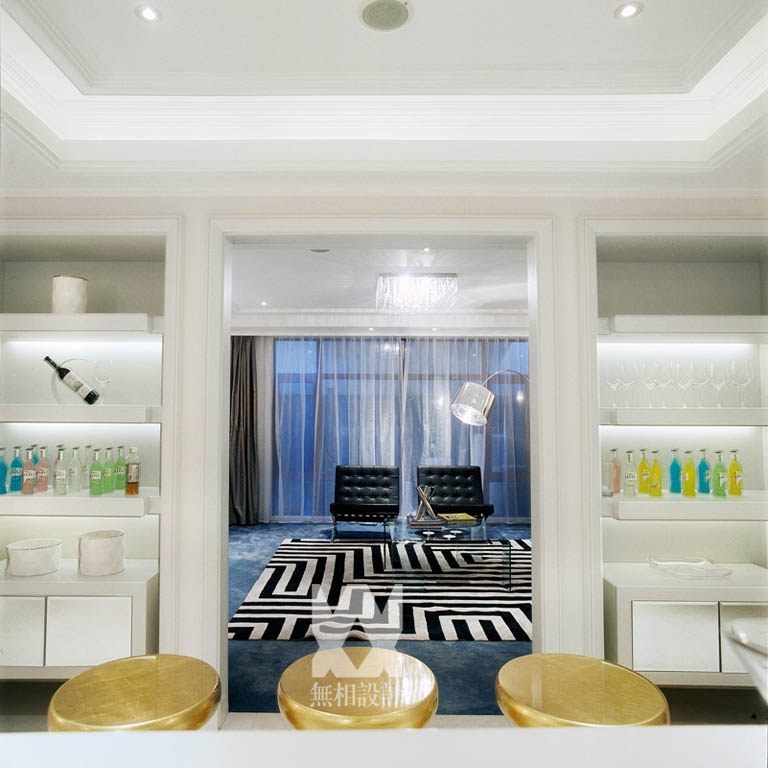Piri Reis Maritime University Kreatif Architects
2015-01-06 01:00
© Yercekim Photography-Omer Kanipak
Yercekim摄影-Omer Kanipak


架构师提供的文本描述。Piri Reis海事大学在土耳其伊斯坦布尔图兹拉区提供高等海事教育和应用培训。该项目占地面积60.000平方米,共有8个相互连接的区块。校园的设计采用了当代最大的可持续性原则,这是BREEAM颁发的“非常好”证书的结果。
Text description provided by the architects. Piri Reis Maritime University provides higher maritime education and applied training in Tuzla district of Istanbul, Turkey. The project consists 60.000 sqm covered area in eight interconnected blocks. The campus is designed with the utmost contemporary sustainability principles that resulted with the BREEAM's "very good" certificate.
© Cemal Emden
Cemal Emden


该项目将密集的编程功能分配到嵌入在倾斜站点中的零碎块中。其基本目标是在各街区之间建立开放的公共空间,让学生和教职员工可以在一天内相互交流。陡峭的地形坡度和支离破碎的街区被用来减少对校园整体轮廓的感知。一条露天走廊延伸到场地的南北方向,将地面上六个相互连接的街区捆绑在一起。这个脊柱定义了整个校园的主要流通路径,并使人们能够体验校园内持续的海景。
The project allocates an intense programmatic function in fragmented blocks embedded in a sloped site. The basic aim was to create open- air public spaces among blocks where students and academic staff may interact with each other through out the day. The steep slope of the terrain and the fragmented blocks are utilised to minimize the perception of the overall campus silhouette. An open-air walkway extending on the north-south direction of the site binds the six interconnected blocks over the ground. This spine defines the main circulation path of the overall campus and enables the experience of the continuous sea view within the campus.


虽然建筑风格的区块正在开发,一个著名的海军术语,“Neta”的意思是“整洁,安全,高效”被认为是设计概念关键字。由于船舶和船坞的空间规划和操作原则是基于简单、简洁和高效的,因此这个概念非常适合使用残酷的材料和功能主义简单的整体布局。
While the architectural style of the blocks is being developed, a well-known naval terminology, "Neta" meaning "neat, safe, efficient" was projected as the design concept keyword. Since the spatial planning and operation principles of ships and dockyards are based on simplicity, plainness and efficiency, this concept was very much appropriate with the use of brutal materials and functionalist simplicity of the overall layout.
© Cemal Emden
Cemal Emden


为了不干扰自然海岸线,建筑块位于离场地北部边界更近的地方,在南部留下一个宽敞的绿色区域。这个海岸地区包括一条与邻近住宅区相连的公众行人通道,以及一个为学生提供海滨训练的码头。与海岸平行的区块被分配用于教育、行政和社会设施,在这些设施中,垂直放置在海上的区块包括培训池、实验室和教室。
In order not to disturb the natural coastline, building blocks are located closer to the northern border of the site, leaving a spacious green area on the south. This coast area embraces a public pedestrian way that is linked with the adjacent residential district, and a pier for the seaboard training for students. The blocks parallel to the coast are allocated for educational, administration and social facilities where as the blocks vertically placed to the sea incorporate training pool, labs and classrooms.
© Cemal Emden
Cemal Emden


拥有最佳海景的社会街区的上层是为图书馆保留的。这座大楼的中间层被设计成一个生活通道,包括小型食品和饮料商店、自动取款机和一个中型咖啡店,而底层则被指定为午餐的普通自助餐厅。从北到南的主要脊柱被分割成较小的部分,有壁龛,梯田和不同的水平,以避免一个巨大的和严酷的轴。盛行的风被与海平行的区块的利用所驯服,这样内部庭院就能免受强风的侵袭。这种布局也有助于有效地利用阳光。
The upper floor of the social block that has the best vista of the sea is reserved for library. The middle floor of this block is designed as a living passage including small food and beverage shops, ATM units and a mid- sized coffee shop whereas the ground floor is designated as the general cafeteria for lunch meals. The main spine reaching from north to south is fragmented into smaller pieces with niches, terraces and different levels to avoid a monumental and harsh axis. The prevailing wind is tamed by the utilisation of the blocks parallel to the sea, so that inner courtyards are protected from severe winds. This layout also helped to benefit from the sunlight efficiently.
© Cemal Emden
Cemal Emden


不需要日光的空间被放置在地下,而这些地方的凸起的地板和露台创造了建筑之间的空旷空间。由于地形的利用,分离的入口可以通过周围的自行车和车辆道路进入这些街区。
The spaces that do not need daylight are placed underground while the raised floors and terraces of those places created the open spaces between the building blocks. Detached entrances enable the access to these blocks with surrounding bicycle and vehicle roads thanks to the utilisation of the topography.


“可持续生活”和“节能”是海上任何船只的主要原则,因此从一开始就采用了“绿色校园”的概念。校园本身产生了45%的电能,产生的多余热能用于建筑的取暖和冷却。淡水是通过净化海水和灰色获得的,雨水用于卫生和园林灌溉。穿孔100%,可回收,无汞的corten钢板吸收大部分紫外线,并减少能源负荷的冷却。这些以及其他许多关于可持续性的预防措施使皮里里斯海洋大学成为土耳其的第一个绿色校园。
"Sustainable life" and "energy saving" are major principles of any vessels on the sea and thus "green campus" concept is adopted from the very beginning. The campus generates 45% of its own electric energy, and excess heat energy from this electricity production is used for heating and cooling of the buildings. Fresh water is obtained by purifying seawater and grey and rainwater is used for sanitary and landscaping irrigation purposes. Perforated 100% recyclable non- mercuric corten steel plates absorb most of the ultraviolet rays and decrease the energy load for cooling. These and many other precautions on sustainability make the Piri Reis Maritime University as the first green campus of Tu
© Yercekim Photography-Omer Kanipak
Yercekim摄影-Omer Kanipak




































































































































































Architects Kreatif Architects
Location Piri Reis Üniversitesi, 34940 Tuzla/istanbul/İstanbul, Turkey
Category University
Architectural Design Kreatif Mimarlik
Design Team Aydan Volkan, Selim Cengic, Onur Arat, Aysegul Kapisiz, Nihat Kalfazade, Ufuk Berberoglu, Erhan Ilicali
Area 60000.0 sqm
Project Year 2014
Photographs Yercekim Photography-Omer Kanipak, Cemal Emden, Yercekim Photography-Orhan Kolukisa
























